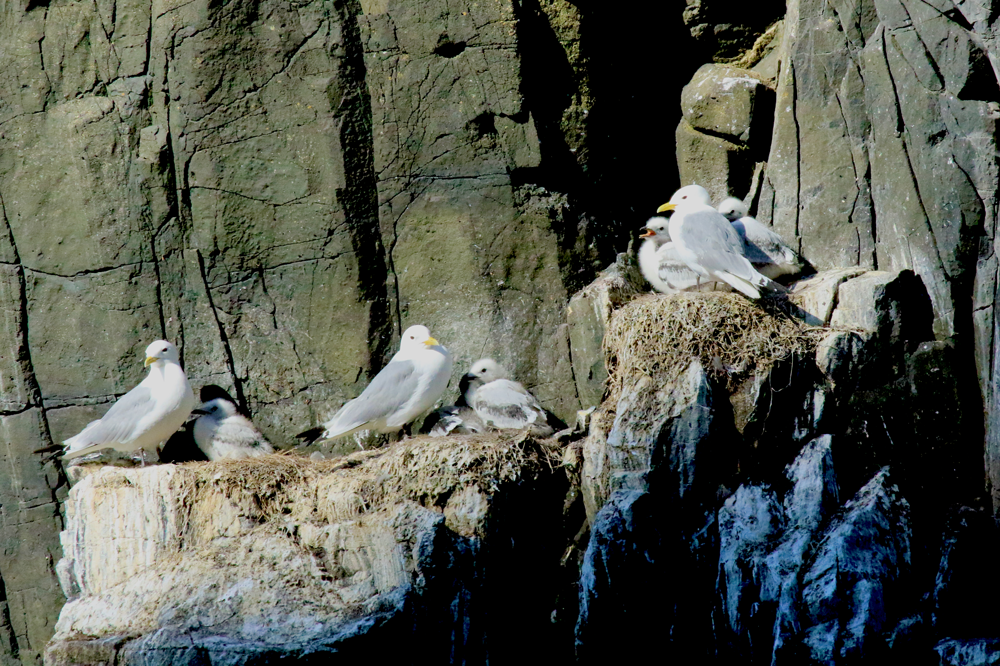Story
Prey patches increase seabird competition
5 June 2019
A new study involving remote sensing research from Plymouth Marine Laboratory suggests that in areas of the sea where prey are clumped into "patches", seabirds have to compete more with each other, leading to more time spent foraging and lower breeding success.

Prey hotspots
The study, led by scientists at the University of Liverpool looked at how differences in environmental features lead to 'prey hotspots'. These high-resource patches are often presented as being beneficial to foraging animals through helping them target here to find food, but the new research indicates that they have negative consequences too.
Researchers compared feeding behaviour and breeding success of black-legged kittiwakes, small seabirds that are key indicators of ecosystem health, but were recently included on the IUCN Red List of Threatened Species. In collaboration with researchers from the UK and Ireland, 15 colonies around the UK and Ireland were compared using miniature GPS loggers to track the seabirds and to understand the importance of different features of the marine environment.
Shelf-sea fronts
PML remote sensing scientist Dr Peter Miller contributed information describing the shelf-sea fronts around the UK and Ireland, areas where two bodies of water meet and create areas of high nutrients and productivity. He said: "The strength, persistence and location of the fronts helped to describe the diversity of the foraging seascape of these birds, and that was found to significantly affect their behaviour and reproductive success."
Protecting ecosystems
Alice Trevail, lead author of the study from the University of Liverpool said: “This study is the first to document the importance of how patchy an environment can be and how it affects seabird behaviour and success.
“We developed a measure of the environment to characterise prey patchiness. In more patchy environments, kittiwake breeding success was 63% lower than in less patchy environments. This is equivalent to a drop from an average of around 1 chick per nest per year, to less than half of all nests successfully rearing a single chick.”
The team hopes that identifying the drivers of breeding success for this critical species will help to understand more about how to protect our ecosystems under environmental change, so giving our declining seabirds the best opportunity for success.
Related information
'Environmental heterogeneity decreases reproductive success via effects on foraging behaviour' is published in Proceedings of the Royal Society B